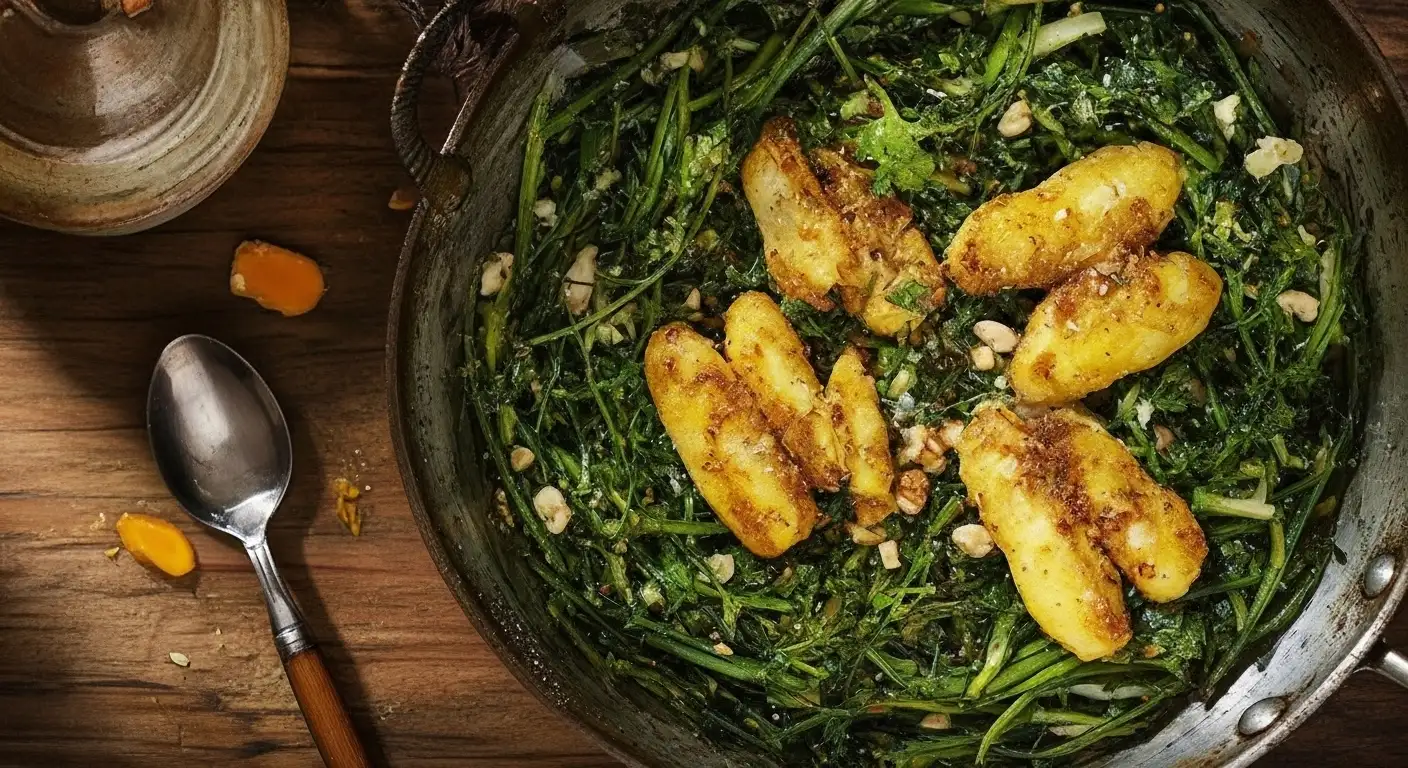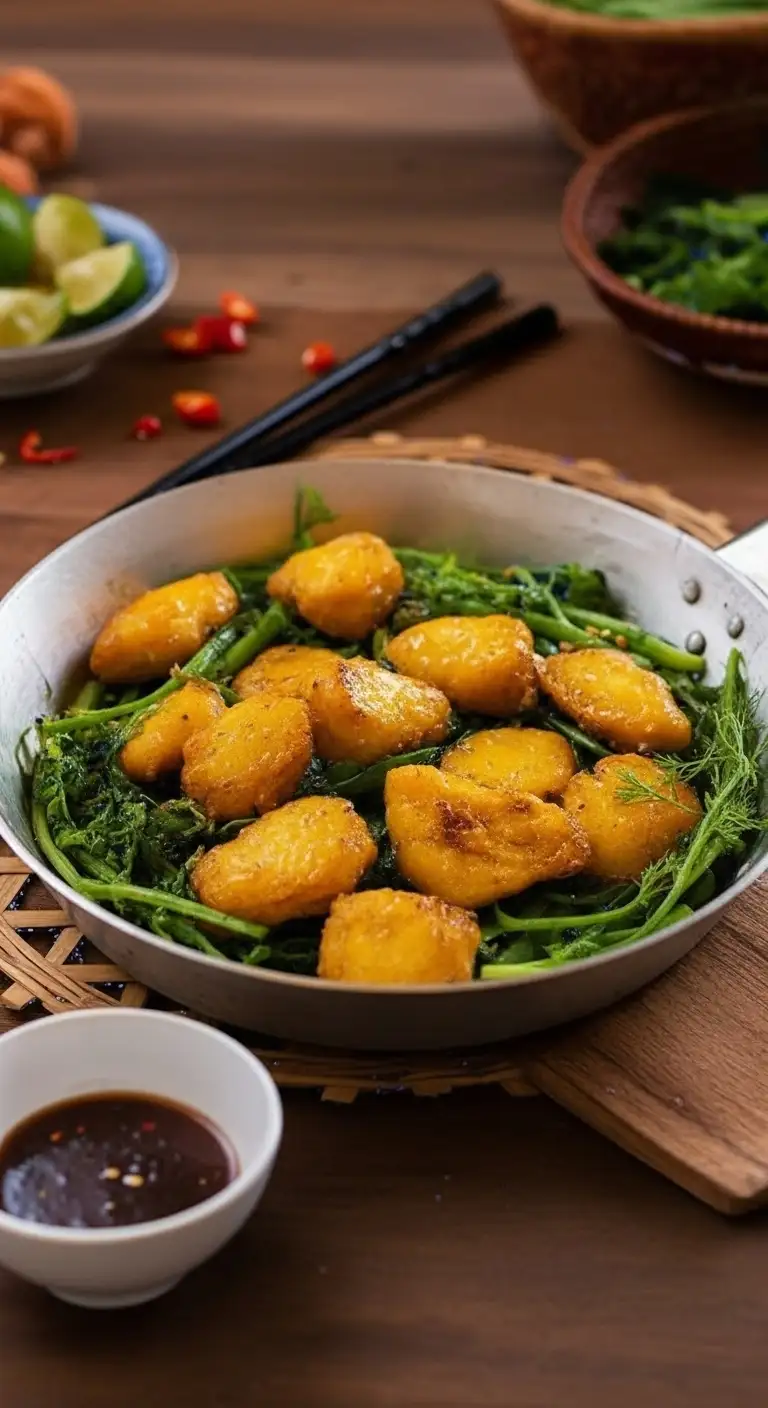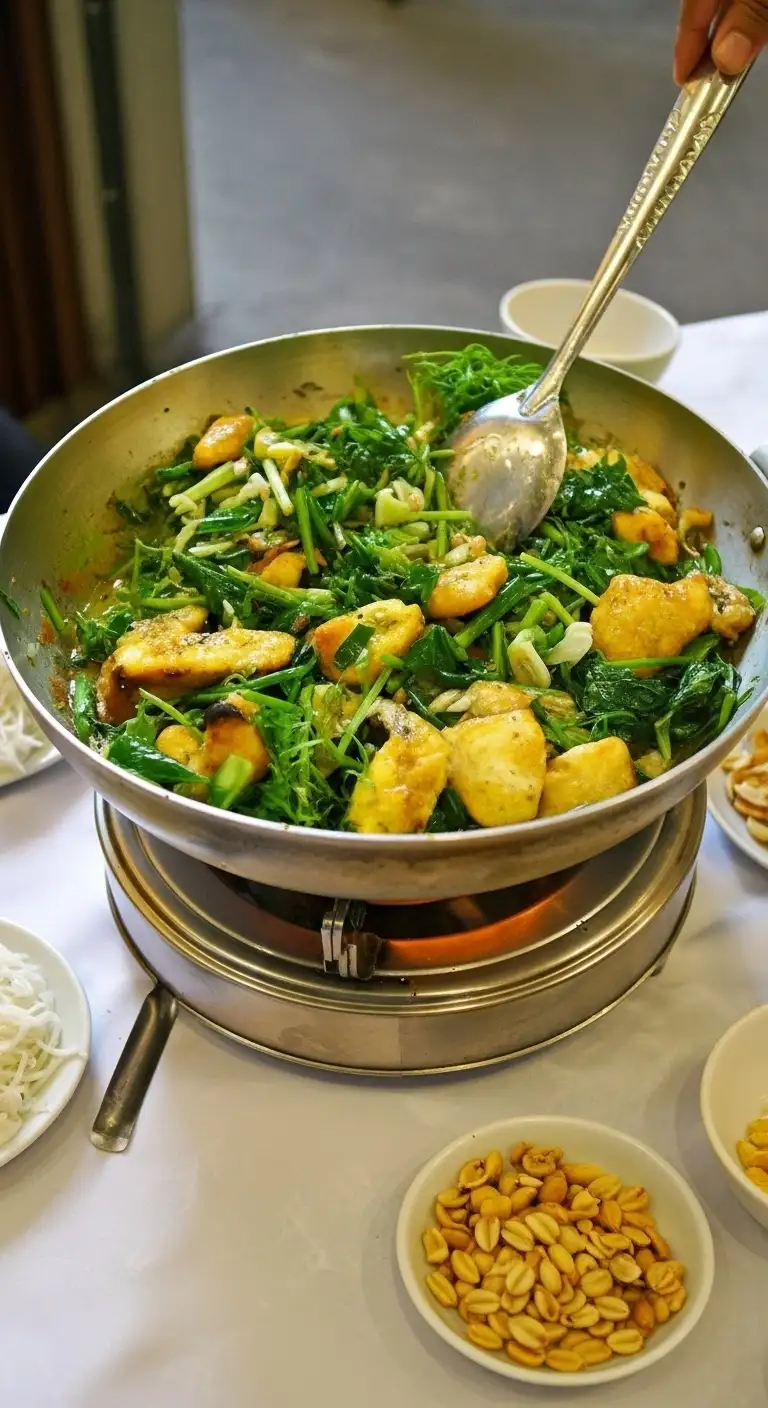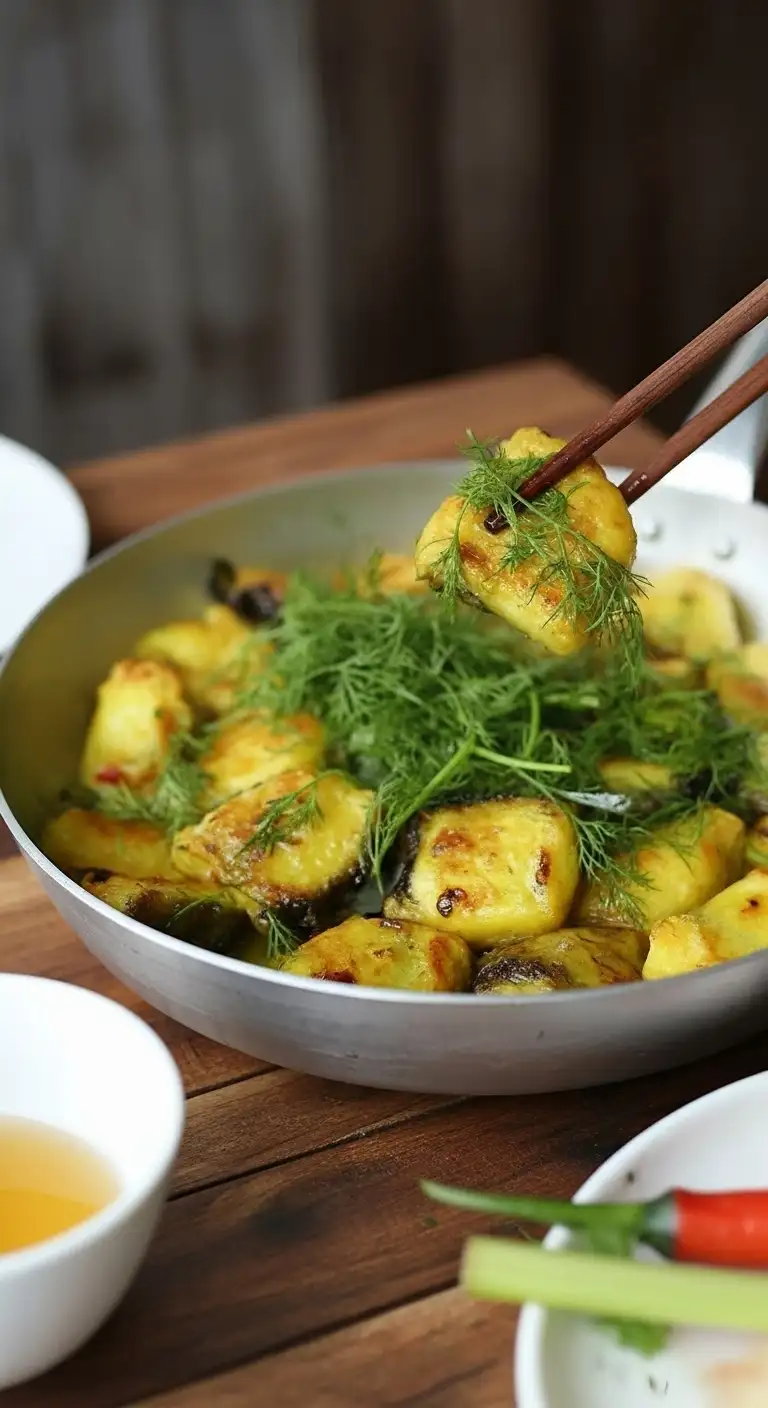Chả Cá Lã Vọng is a legendary Vietnamese dish that is much more than just a meal—it is a culinary and cultural experience unique to the capital city of Hanoi in Northern Vietnam. This flavorful dish of turmeric-marinated fish, sizzling with dill and spring onions, has captivated diners for over a century and remains a must-try for any visitor.
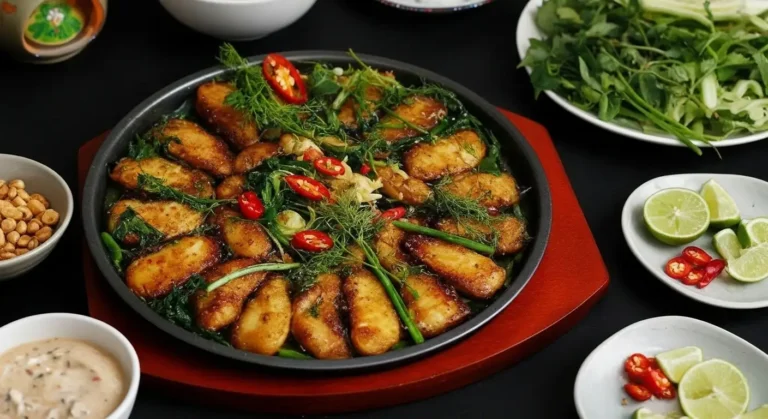
Chả Cá Lã Vọng: The Basics
The Dish: Chả Cá Lã Vọng literally means “Grilled Fish of Lã Vọng.” It consists of pieces of firm white fish, typically Hemibagrus (local catfish, Cá Lăng), which are marinated, grilled over charcoal, and then cooked at the dining table in a hot pan of sizzling oil or fat with generous handfuls of fresh dill and spring onions.
The History: The dish originated in the 19th century at the Đoàn family’s small eatery on Hàng Sơn Street (now Chả Cá Street) in Hanoi’s Old Quarter. The family served this specialty to local resistance fighters during the French colonial era. The restaurant was named after a statue of the poet and resistance fighter, Lã Vọng, that stood outside the shop. The original restaurant, Chả Cá Lã Vọng, still operates today and only serves this single dish.
The Flavor Profile: The fish is marinated in a blend of ingredients that impart a distinct Northern Vietnamese taste: turmeric (for color and earthy flavor), galangal juice, fermented rice, pepper, and sometimes a hint of shrimp paste. When cooked at the table, the hot fat crisps the fish’s exterior while the dill and scallions infuse the fish with a fresh, aromatic fragrance.
The Dish is a Category in Itself
Chả Cá Lã Vọng is a highly specific, restaurant-based experience and is generally considered a singular delicacy, rather than a broad category of food.
Chả Cá Lã Vọng (The Original): The traditional, historical preparation centered in Hanoi, using Cá Lăng (Hemibagrus catfish), marinated with turmeric and galangal, cooked at the table with copious amounts of dill and spring onions, and served with a pungent mắm tôm (fermented shrimp paste) dipping sauce. It is almost exclusively found in dedicated restaurants, not as street food.
Chả Cá Hà Nội (Hanoi Style Grilled Fish): While the name Chả Cá Lã Vọng is tied to the original restaurant, “Chả Cá Hà Nội” (Hanoi Grilled Fish) refers to the same style of dish offered by other restaurants in the city. Variations mainly involve the type of fish (sometimes snakehead or other freshwater fish) and slight differences in the dipping sauce.
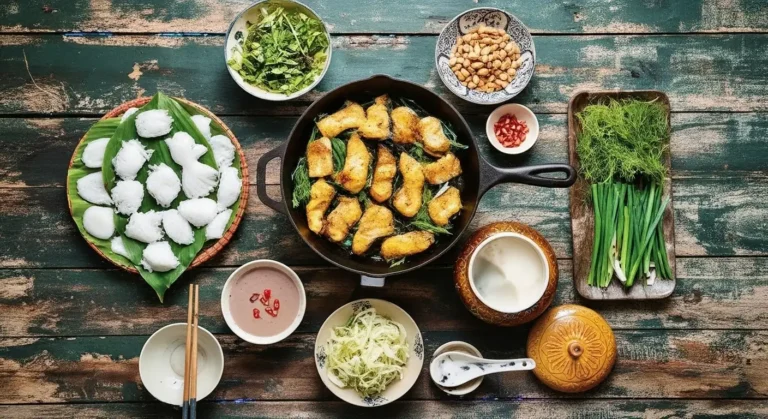
How to Eat Chả Cá Lã Vọng (The Dining Ritual)
The method of eating Chả Cá Lã Vọng is a signature part of the experience, as the cooking is often completed right at your table over a small charcoal burner.
Sizzle at the Table: The staff will bring out a small pan of hot oil or fat placed over a burner. Pre-grilled, marinated fish is added, followed by large handfuls of fresh dill and spring onions. You or the server will gently stir the mixture as the herbs quickly wilt and release their aroma.
Prepare the Bowl: In a separate bowl, place a base of bún (thin rice vermicelli noodles).
Assemble the Mix: Transfer a portion of the hot, sizzling fish and herbs from the pan onto the noodles.
Garnish and Sauce: Top the mixture with a generous sprinkle of crunchy roasted peanuts. The essential component is the dipping sauce:
Mắm Tôm (Fermented Shrimp Paste): This pungent, dark-pink paste is the traditional accompaniment. To prepare it, add a squeeze of lime juice and a dash of chili (and sometimes a little sugar) to the paste and stir vigorously until it turns frothy and pale.
Other Dipping Sauces: Some prefer a more mild sweet and sour fish sauce (Nước Chấm), which is usually available as an alternative.
Enjoy: Drizzle the prepared sauce over the bowl and mix everything together—the tender fish, aromatic dill, soft noodles, crunchy peanuts, and the intense, salty, and savory paste—for a balanced, unforgettable bite. Locals often pair the dish with a cold Hanoi beer or rice wine.
Regional Differences in Vietnam
Chả Cá Lã Vọng is unequivocally a Northern Vietnamese (Hanoi) specialty, and its identity is strongly tied to its place of origin.
North (Hanoi): This is the home of the dish. The definition remains consistent: turmeric and galangal-marinated fish, cooked with dill and scallions, served with bún (vermicelli), peanuts, and the mandatory mắm tôm dipping sauce. The dining experience—cooking at the table—is also a core part of the tradition.
Central and South Vietnam: The dish is not a traditional specialty in the Central or Southern regions. While you can find restaurants serving “Chả Cá Lã Vọng” in cities like Ho Chi Minh City, they are typically restaurants mimicking the famous Hanoi dish, often with a slightly different flavor profile to suit local tastes (e.g., more reliance on fish sauce and less on the intense mắm tôm).
In essence, if you are not in Hanoi, you are tasting an interpretation of the original. The specific ingredients, especially the Hemibagrus fish and the cultural emphasis on mắm tôm and fresh dill, mark it as a true culinary trademark of the North.
